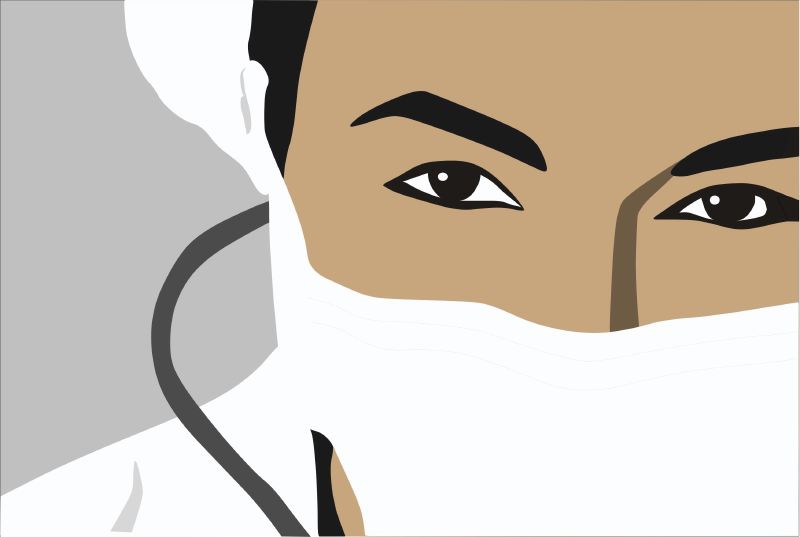

Solving medicine’s moral injury
How to solve physician moral injury?
Navigating an ethical path between the Hippocratic Oath, 10 to 15 years of intense training, and the realities of hospitals making a profit from people at their sickest is psychologically and ethically grueling. Routinely experiencing the suffering, anguish, and loss of being unable to deliver the care that patients need is heartbreaking, especially to professionals who have dedicated so much of their lives to delivering such care.
These daily, unremitting betrayals of patient care and trust are horrific but true examples of “death by a thousand cuts,” a term used by one physician to described their experience of burnout. Any one of these cuts inflicted alone, might heal. But repeated incessantly and daily, they agglomerate like angry platelets into the clot of moral injury clot in today’s health care system.
To solve moral injury first requires an acknowledgment of its existence and its impact.
These daily, unremitting betrayals of patient care and trust are horrific but true examples of “death by a thousand cuts.
The impact of moral injury
Moral injury remains a difficult concept to measure objectively because existing tools often have methodological problems or are not validated for use in non-military populations. There is limited evidence from empirical studies on moral injury, yet sufficient data shows that moral injury represents a considerable source of mental health morbidity, as a result of having witnessed or violated our core moral boundaries.
Moral injury constitutes a substantial source of mental health morbidity, as a result of having witnessed or violated our core moral boundaries.
Moral injury has been consistently linked with adverse outcomes such as suicide, depression, anxiety, PTSD, and substance use disorders. Studies highlight how people experiencing moral injury can suffer an existential crisis and develop impairment in familial and occupational functioning, sometimes leading to familial breakdown and unemployment.
A recent Lancet article suggests that “moral injury might be an important public health concern”.
And while moral injury is increasingly acknowledged by physicians and leaders alike, it may not be sufficient to truly describe all that is going on in modern medicine. Some commentators have named what we and our patients experience as “human rights violations”. (More on that in a future article).
Why haven't these clever physicians found a solution?
You would think that with our resourcefulness, intelligence and work ethic, we would find a way to solve this problem. I am certain that we would if we could. But it is frankly too big for doctors to solve — alone.
Simon G. Talbot and Wendy Dean put it most succinctly in Stat: “Physicians are smart, tough, durable, resourceful people. If there was a way to MacGyver themselves out of this situation by working harder, smarter, or differently, they would have done it already. Many physicians contemplate leaving heath care altogether, but most do not for a variety of reasons: little cross-training for alternative careers, debt, and a commitment to their calling. And so they stay — wounded, disengaged, and increasingly hopeless.”
So, finding a solution requires sustaining and strengthening each other, and combining our forces across medicine. But we also need to think wider to engage the key players who can shift momentum away from assembly line medicine back towards humanity. The obvious influencers are politicians, legislators, civic movements, insurers, and the C-suites of healthcare businesses. There is, however, one key group we’ve missed out on…
Physician-patient alliances
I would argue that doctors have massively neglected our most powerful allies in improving health: our patients.
Yes, a minority may seek to sue us when thing go wrong. And some patients can be demanding, heart-sinking, or so focused on their perceived needs rather than what medicine says they need. And then there is the common mismatch between what some patients want vs what the system will pay for. These tensions are a leading cause of patient dissatisfaction and resultant physician stress.
We are all, arguably, sick people.
And yet, physician-patient alliances have enormous potential to influence change, if values-driven and based on solid science. I am talking about genuine health-driven alliances without financial or political conflicts, not industry-funded groups who clearly have a financial agenda.
I predict that by building strong relationships over a common goal, our misunderstandings will reduce. Furthermore, there might even be less litigation in future if patients understood what it’s like inside to be a physician working in the system. And physicians will be less disparaging of the challenging patients who are merely seeking solutions that the system cannot offer them.
If there was a way to MacGyver themselves out of this situation by working harder, smarter, or differently, they would have done it already.
Potential solutions
There is clearly no quick fix to the underlying causes of moral injury in healthcare. This is not a war where a ceasefire can be declared.
So, how do we try to move from the collective moral injury experience of physicians to a systematic change in the structure of medical practice?
Dean, Talbot, and Dean (2019) guide us with the following recommendations to start to address moral injury:
- Recognition. After 40 years of attributing high rates of physician career dissatisfaction, attrition, alcoholism, divorce and suicide to ‘burnout’, there is growing recognition that these outcomes may instead be caused by moral injury. Talk about it with your colleagues, leadership, politicians. Write about it. Tweet about it. Until it becomes a thing, it won’t get the traction needed for change.
- Bring together clinicians and administrators. Invite managers to ward rounds. Administrators invite clinicians to finance meetings. Walk a mile in each other’s shoes. Only through mutual understanding and (dare I say) mutual compassion can we start to bridge the chasm between clinical and administrative priorities.
- Make clinician satisfaction a financial priority. Happy, healthy clinicians give better patient care, have lower complication rates, leave their jobs less, need less time off sick. All of this is good for the bottom line. It’s a no-brainer.
- Get doctors to engage with politicians and thought leaders. Only by increasing understanding of what it’s truly like in the war zone of modern medicine can we get the political and legal support to enable meaningful change.
- Re create a sense of community among clinicians. The doctors’ mess, Corrigan’s secret door, private social media groups: these are all about the same thing. Safe spaces.
This is also where Physicians Anonymous comes in. We offer a safe, anonymous, and confidential doctor-only community to share our tears and our laughter. Together, in anonymous fellowship, we may start to solve moral injury.
Solutions from across the Pond
Again from over the Pond, we like the British Medical Association’s recommendations:
1. Adequate funding and resourcing
2. Increase staffing
3. Empower doctors
4. Develop an open and sharing workplace culture
5. Provide support for employees
6. Streamline bureaucracy
The BMA adds a second category of steps that doctors can take themselves to alleviate the effects of moral
distress. These are:
1. Talk about moral distress and moral injury
2. Develop support networks
3. Speak out (when possible)
4. Seek advice
5. Develop a self-care plan.
These are, ahem, not brain surgery.
The BMA, quite realistically also note that the ability of doctors to enact these ideas is “highly dependent on their work environment.” (i.e. sending people back into a war zone is not a great way to prevent PTSD).
Conclusions
While the risk of moral distress cannot be completely removed from the medical workforce, steps can be taken to moderate its effects and start to solve moral injury. By recognizing the inherent emotional strain created by the difficult decisions that doctors have to make every day, building a supportive working environment, and providing us with the tools and resources to do our jobs, the impact of moral injury may be reduced.
If you would like to find out more about our growing community of doctors-only safe spaces, do contact us or check out our Forums and groups.
In these safe spaces, we may start to solve moral injury that affects so many of us.
